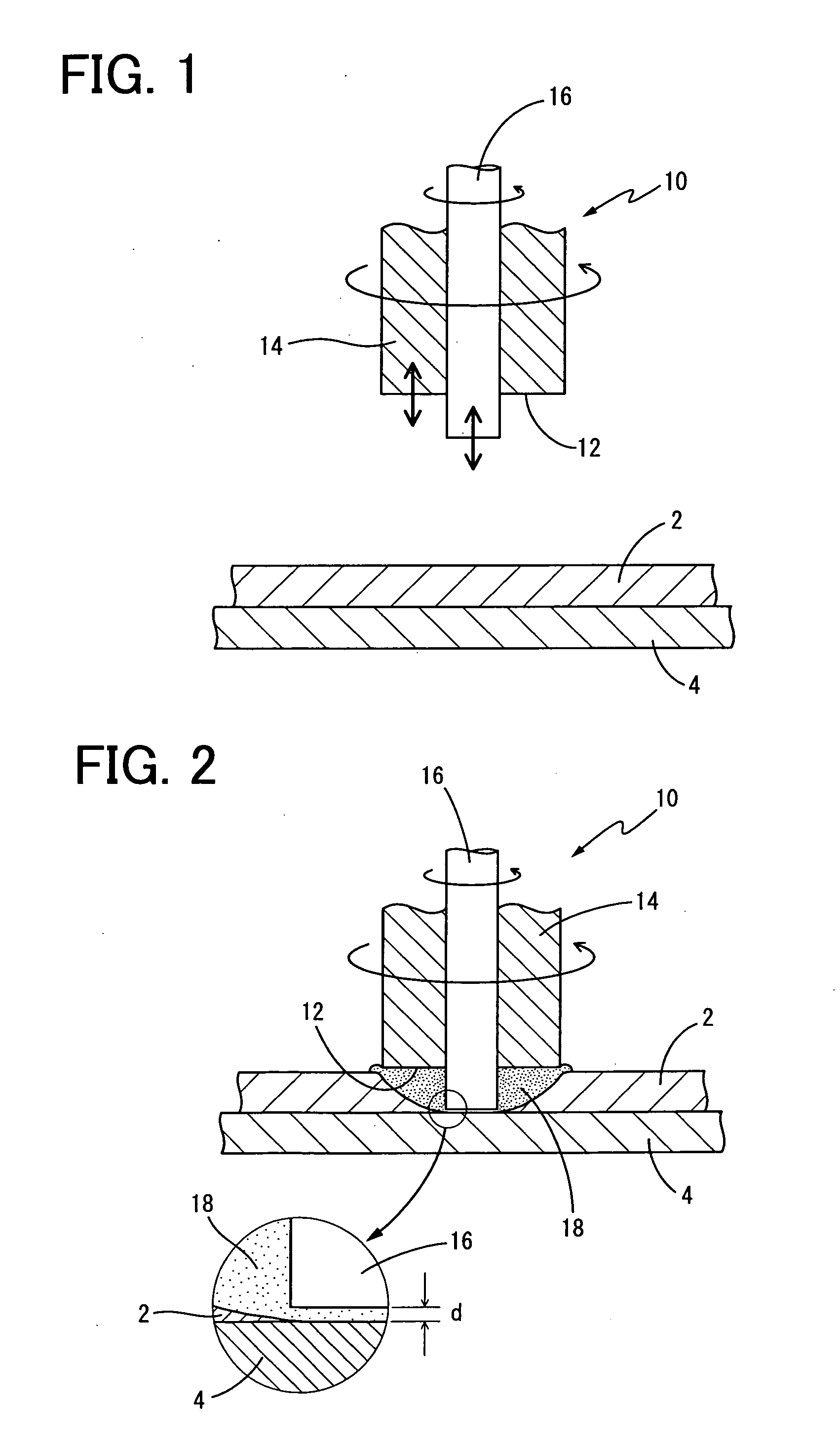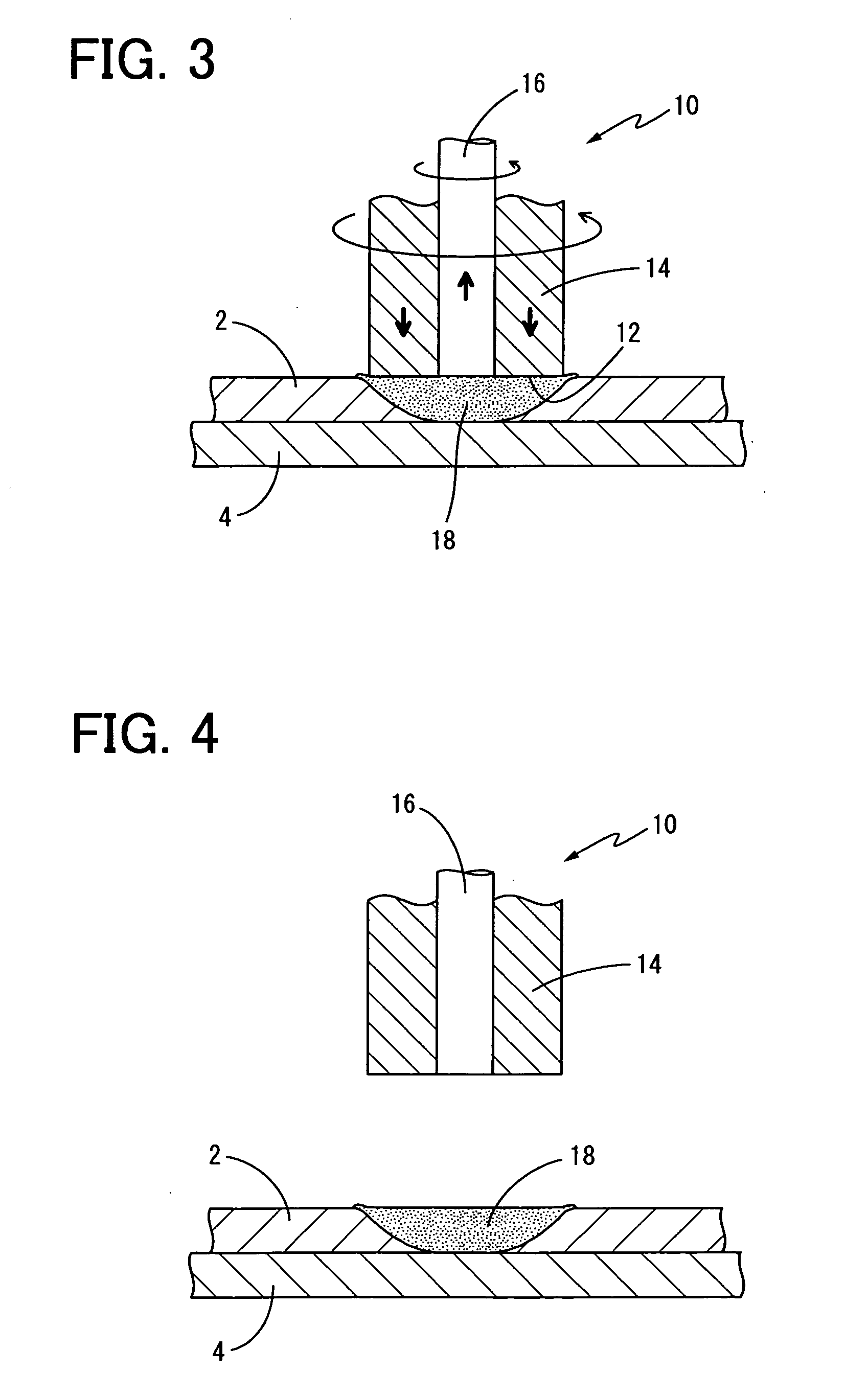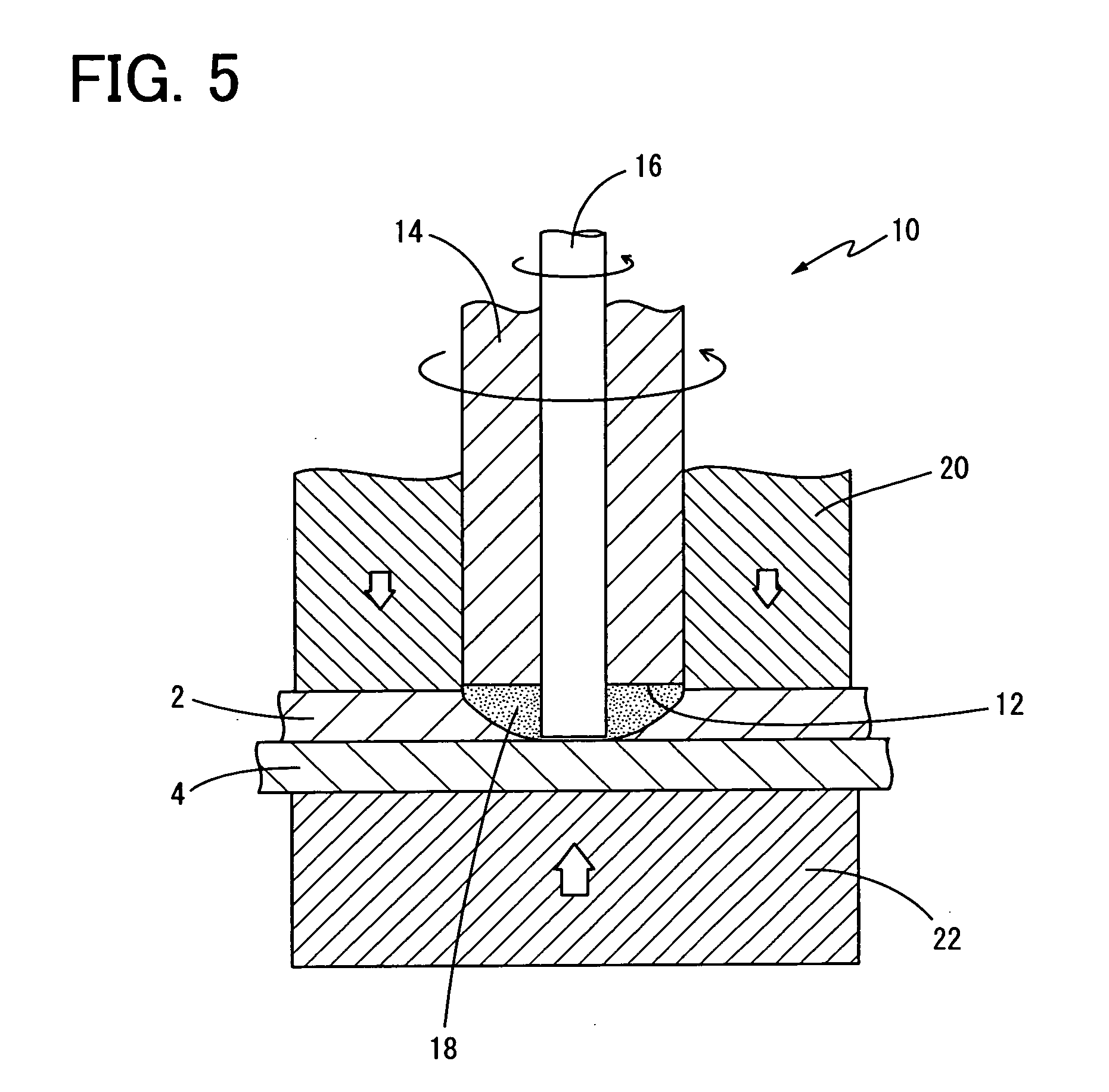Method of joining together dissimilar metal members
a metal member and dissimilar technology, applied in the field of joining together dissimilar metal members, can solve the problems of reliability of the joint, the inability to replace all the materials to form the body parts and other parts with aluminum materials, and the inability to avoid providing a so-called hybrid joint, so as to achieve the effect of preventing uneven qualities of the joint region and enhancing the strength of the junction
- Summary
- Abstract
- Description
- Claims
- Application Information
AI Technical Summary
Benefits of technology
Problems solved by technology
Method used
Image
Examples
examples
[0072]Initially, there was prepared, as the first member 2 formed of a soft metal, a plate member formed of 6000 series aluminum material (AA6016-T4) having a thickness of 1 mm. There was also prepared, as the second member 4 formed of a hard metal, a plate member formed of a steel material (SPCC) having a thickness of 1 mm.
[0073]Subsequently, the aluminum plate 2 and the steel plate 4 were superposed on each other. The friction stir welding operation according to the present invention was implemented from a side of the aluminum plate 2, by using the rotary tool 10, wherein a cylindrical steel clamp as the burr-restraining member 20 was inserted, so that the cylindrical steel clamp was brought into engagement with a peripheral portion of the rotary tool 10, as shown in FIG. 5.
[0074]In detail, the backing jig 22 was butted together with a back surface of the lower metal plate 4, and in this way, the plates 2, 4 were supported on each other. The cylindrical steel clamp which had an ex...
PUM
| Property | Measurement | Unit |
|---|---|---|
| thickness | aaaaa | aaaaa |
| thickness | aaaaa | aaaaa |
| diameter | aaaaa | aaaaa |
Abstract
Description
Claims
Application Information
 Login to View More
Login to View More - R&D
- Intellectual Property
- Life Sciences
- Materials
- Tech Scout
- Unparalleled Data Quality
- Higher Quality Content
- 60% Fewer Hallucinations
Browse by: Latest US Patents, China's latest patents, Technical Efficacy Thesaurus, Application Domain, Technology Topic, Popular Technical Reports.
© 2025 PatSnap. All rights reserved.Legal|Privacy policy|Modern Slavery Act Transparency Statement|Sitemap|About US| Contact US: help@patsnap.com



